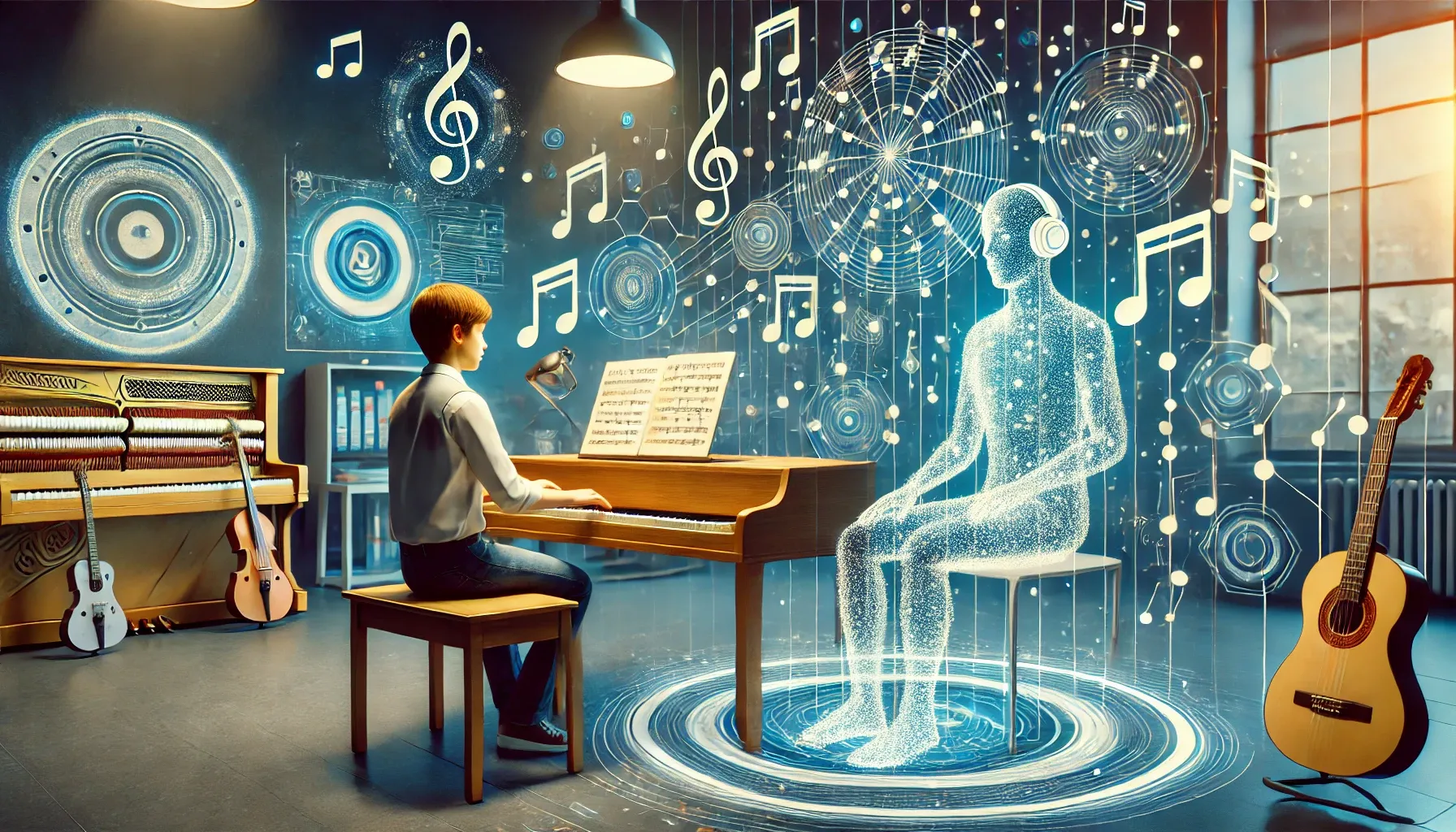A Symphony of Technology and Creativity

The digital transformation of education has reached a crescendo, and music teaching is no exception. As artificial intelligence (AI) continues to reshape various sectors, its application in music education is proving to be a game-changer. From personalized learning pathways to real-time feedback, AI opens up new horizons for students, educators, and hobbyists alike. Here’s a look at how AI is making music teaching more engaging, efficient, and accessible, and what this means for the future of music education.
1. Personalized Learning Experiences
AI-powered music platforms can analyze a student’s skill level, strengths, and areas for improvement to create tailored lessons. Instead of a one-size-fits-all curriculum, students can enjoy a customized approach that adapts to their learning style and progress. For example, AI can recommend exercises based on specific weak points or identify suitable repertoire for students based on their current skills.
In traditional music education, personalization often requires significant teacher time and attention, which may not always be feasible in a class setting. AI can take on some of this load, helping students at their own pace while freeing educators to focus on areas where their expertise is most needed.
2. Real-Time Feedback and Progress Tracking
One of the biggest challenges in music learning is self-assessment. AI-driven tools can provide instant feedback on pitch, rhythm, timing, and expression. These tools can analyze a student's performance in real time, highlighting mistakes and offering guidance on how to correct them. This feature is especially helpful for beginners who often struggle with self-evaluation and may not yet have a strong grasp of what “sounds right.”
By tracking a student’s progress over time, AI can generate reports that allow both students and teachers to monitor improvement and make data-driven decisions about future lessons. This continuous feedback loop fosters an environment where students feel more accountable and motivated to practice regularly.
3. Augmented Practice Sessions
Practicing alone can be challenging and sometimes discouraging, particularly for students who need external motivation. AI-based tools can simulate accompaniment, allowing students to practice with virtual backing bands or orchestras. Some platforms even have interactive interfaces where students can play along with recordings of famous musicians, enhancing the learning experience and making practice more enjoyable.
By simulating ensemble settings, AI also prepares students for real-world scenarios, helping them develop skills like tempo control, listening, and blending, which are essential for group performances.
4. AI-Powered Composition and Improvisation Tools
For students interested in composition and improvisation, AI offers exciting opportunities to explore new musical ideas and styles. With machine learning algorithms trained on vast musical datasets, AI can assist students in generating melodies, harmonies, and rhythms. Some tools allow users to input a basic theme, which the AI then expands into a full composition, or to improvise based on the user’s style and preferences.
This can be particularly useful for educators in showing students various musical genres and structures. These tools can foster creativity, as students experiment with different sounds and styles without needing extensive theoretical knowledge or instrumental skills.
5. Accessible Music Education for All
Historically, high-quality music education was only available to those who could afford private lessons or attend specialized schools. AI democratizes access to music learning by providing affordable (or even free) online resources and applications. Apps and online courses now offer structured music education programs that anyone with an internet connection can access, breaking down financial and geographical barriers to learning.
For educators, AI reduces the burden of repetitive tasks, such as grading or creating practice exercises, allowing them to focus on the creative and motivational aspects of teaching. This combination of human expertise and AI support enables a more effective and inclusive approach to music education.
6. Gamified Learning Experiences
AI-powered music apps have brought gamification into music teaching, making the learning process more enjoyable and engaging. By incorporating game elements like achievements, challenges, and leaderboards, these platforms encourage students to progress and practice more often. Learning an instrument is a discipline that requires consistency, and gamification provides the motivation many students need to stay on track.
Gamified learning also resonates with younger generations who are familiar with interactive digital experiences, potentially drawing in students who may not have otherwise shown interest in traditional music education.
7. Future of Music Teachers in the AI Era
As AI continues to integrate into music education, the role of music teachers will evolve rather than disappear. AI can handle tasks like analyzing technical accuracy and generating personalized exercises, but human teachers provide essential guidance in areas AI can’t fully replicate—interpretation, emotional expression, and understanding the nuances of musical style and culture.
Educators can focus on mentoring students, guiding their creative development, and fostering a passion for music. In this new paradigm, AI tools become an extension of the teacher’s toolkit, enabling them to provide a more well-rounded educational experience and focus on areas where their expertise has the most impact.
Conclusion
AI is orchestrating a new era in music education, blending creativity with cutting-edge technology. From personalized learning and real-time feedback to accessibility and gamification, the possibilities are inspiring. By harnessing the power of AI, music educators and students can unlock new levels of engagement, skill development, and artistic expression.
Whether you’re a student eager to learn an instrument or a teacher looking to modernize your methods, the integration of AI into music teaching offers a symphony of opportunities that can enhance the learning journey and bring music to more people than ever before. In the end, AI is not here to replace music teachers but to empower them—and their students—to achieve harmony in ways we’ve only begun to imagine.

